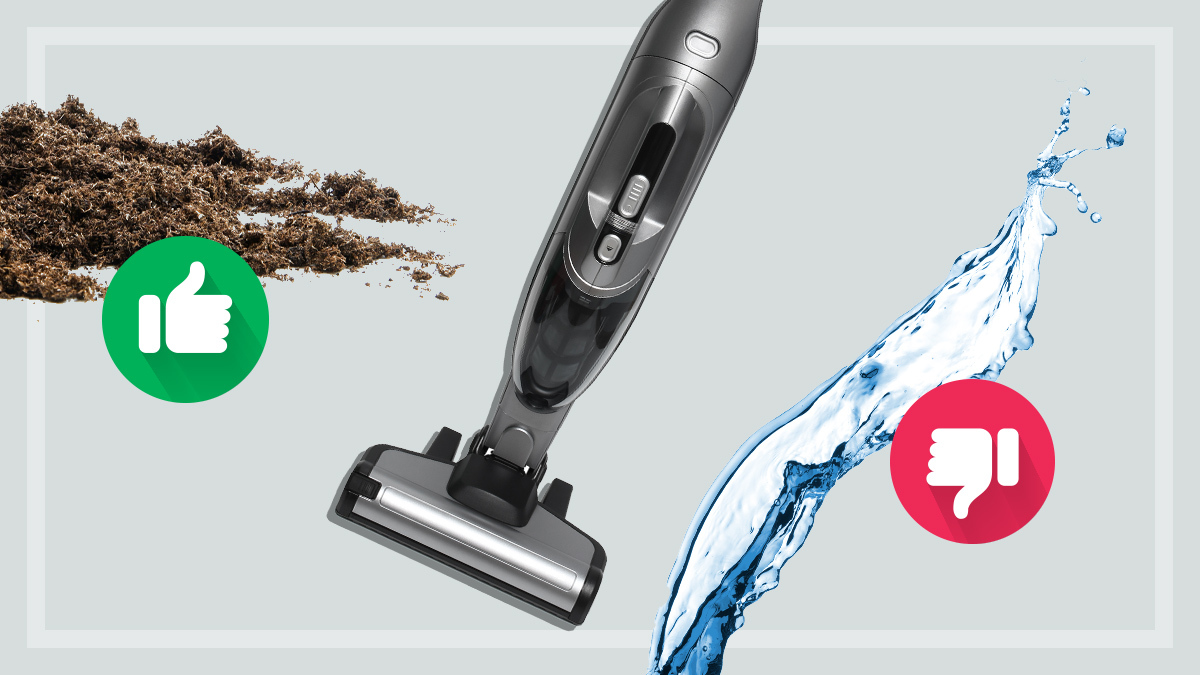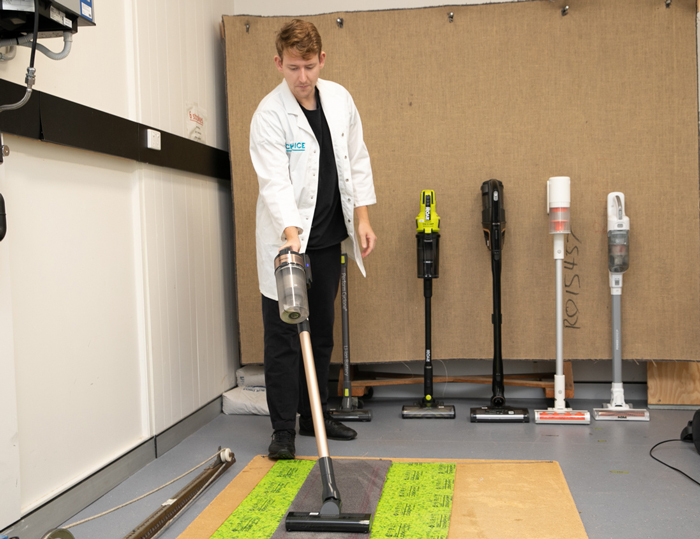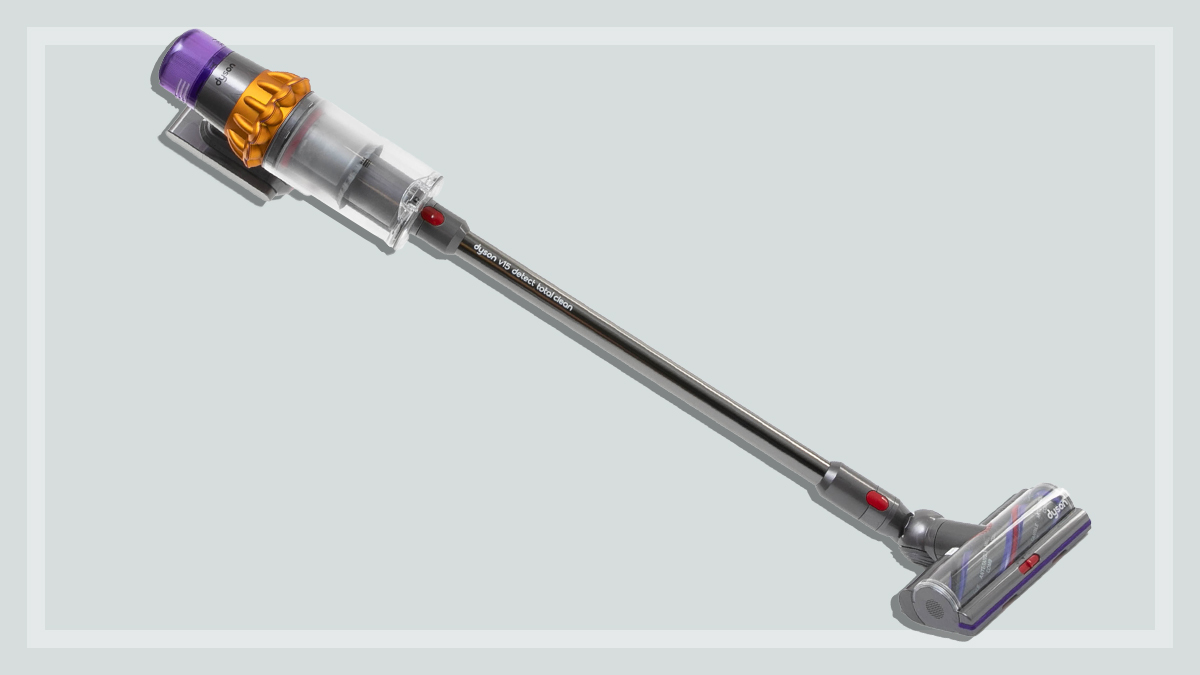Get our independent lab tests, expert reviews and honest advice.
Things you can and can’t clean with a stick vacuum

Cordless, lightweight and often sleekly designed, stick vacuums can take the drag out of cleaning up life’s inevitable messes. A pet that won’t stop shedding, remnants of your toddler’s dinner on the floor, or a messy home office work station: there are plenty of reasons you may want to whip out a stick vac for a quick clean-up. However, there’s a limit to what they can suck up safely.
Our latest stick vacuum review includes 56 models that CHOICE vacuum expert, Adrian Lini has put through rigorous tests in our labs to assess how well they perform on aspects such as picking up dirt from a hard floor, cleaning carpets, pet hair removal and picking up sand and pebbles from a car’s floor. Adrian shares how to prolong the life of your mean, lean cordless machine by advising what it can, and can’t, clean up.
Can: Suck up small outdoor debris
While you don’t want to go completely off-road and into the garden with your vacuum, Adrian says that using it to suck up small debris such as fallen leaves or small sticks on a man-made surface, like a patio, won’t ruin your vacuum.
But if you’re venturing outside, you may need to clean it more frequently.
“One of the best things you can do to ensure your stick vacuum lives a long life is to keep it clean,” says Adrian.
“Ideally, you’re emptying the dustbin and cleaning the head and brush rollers after every use. Filters should be cleaned once a month or after a few uses and all other parts of the vacuum except the motor should be cleaned once a year.”
Can’t: Clean up broken glass or sharp objects
Smashing a mirror may mean seven years of bad luck, starting with a cut finger if you use a stick vac to clean it up.
“While technically your vacuum should be able to handle sharp objects like broken glass, vacuuming them up with other dust and dirt can make for a potentially dangerous situation when you’re trying to clean shards of glass out of your vacuum’s dust bin and filters,” Adrian says.
Can: Gently vacuum your keyboard
Having a biscuit or a bite to eat while you’re browsing at your laptop or desktop computer can make for messy “snaccidents”, such as crumbs getting stuck in your keyboard (which can then cause a malfunction).
Luckily, Adrian says you can use your stick vac to suck up those pesky crumbs, but employ a light touch. “Go over your keyboard with a dusting brush and then, very gently with your stick vacuum. But if you have any loose keyboard keys, I’d avoid using your vacuum all together,” he says.

Can’t: Clean up wet or damp messes
“It’s not a good idea to use your stick vacuum on damp or wet messes,” says Adrian. Why? Once the insides of the vacuum become wet from sucking up your wet coffee grounds, damp soil from an overturned pot plant, or muddy footprints, it can be very difficult to clean.
“If you use your vacuum on wet messes, to get it truly clean again you’ll usually have to soak all parts except for the motor in warm water which is both fiddly and time consuming,” he says.
Can: Swallow up pet hair
For most pets, the sound of an operational vacuum cleaner causes either excitement or sheer terror. But while your furry friend might have a love-hate relationship with these noisy machines, it’s pure love from pet owners who need to clean up after them – which is why we give all vacuums we test at CHOICE a pet hair removal score.
“When it comes to choosing a vacuum, especially for frequent pet hair removal, you’ll want to consider two things: cost and convenience,” says Adrian.
You’ll only get a 10- to 15-minute run time with a stick vacuum on its max setting before you’ll need to recharge it, which may not be ideal if you have a large house with a big pet hair issue
To work effectively on pet hair, a vacuum has to be quite powerful, and it’s usually the more expensive stick vacuums that really compete with barrel vacuums on this front. Although there are a few models in our review that cost less than $500 and received a perfect score for pet hair removal, most of the models that performed best cost $800-$1500.
And remember that they’re battery-powered, so you’ll only get a 10- to 15-minute run time with a stick vacuum on its max setting before you’ll need to recharge it, which may not be ideal if you have a large house with a big pet hair issue. Find out more about the best vacuum cleaners for pet hair.
Can’t: Vacuum delicate fabrics
Stick vacuums work best on smooth, hard surfaces as opposed to on carpets (the models that did best in our testing on carpet scored up to 91% but many score significantly lower).
However, not all fabrics are suitable for vacuuming, so be mindful of whipping out your stick vac if you have rugs or carpets made from delicate materials.
“The brush head of stick vacuums can be quite strong, so if it’s rubbing against delicate fabrics it can cause pilling or fraying,” says Adrian.
“Before vacuuming a delicate rug or carpet, I recommend reading its care instructions or checking with the manufacturer to avoid any damage.”
Maybe: Very fine particles such as fireplace ash or construction dust
If you have a messy fireplace or you’re going through a renovation and are keen to clean up a bunch of sawdust, think twice before you pick up the stick vacuum.
“Very fine particles may pass through, or clog the filter, which could lead to the motor overheating or overworking, damaging your vacuum,” says Adrian.
“In one of our tests on vacuum performance we use flour, which the vacuums are usually fine with, but they do require a good filter clean afterwards.”






